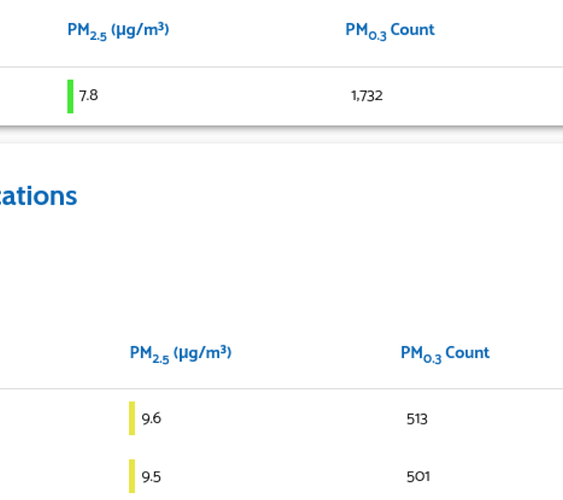I have two indoor monitors (I-9PSL) and one outdoor monitor (O-1PST) which I have been putting together over the past few weeks. Now I have all three set up and running right next to each other indoors. The two indoor monitors seem to have good agreement within expected uncertainties for PM2.5, temp, RH, CO2, TVOC and NOx. The outdoor monitor, the last to be set up just a couple of days ago, however, does not. All three are within a few cm of each other, with the two indoor monitors on a table mounted with the supplied feet to ensure airflow around it, and the outdoor one just above them on the wall mounted on the screw holes with the vent facing downwards as it should be. I still need to set up my outdoor installation, so I thought for the time being I could compare all their readings indoors. All three are on firmware version 3.1.21
I know that the temperature and RH values for the outdoor monitor have corrections applied assuming outdoor use, so I am not particularly concerned about those. And I do not have an outdoors reference to check it against later anyway so I will just have to accept whatever values it gives. The CO2 value also will take a few days for the 8-day rolling average to be fully evaluated. But the PM2.5 value, although clearly within the ±10µg/m3 at 0-100µg/m3, I was expecting to show closer agreement. Same goes for the TVOC.
Is there some similar outdoor correction applied to PM2.5 measurements too that I am unaware of? Or am I expecting too much and is this kind of deviation normal?
Just in case it is relevant:
I am aware that airgradient have developed corrections for certain batches of the PMS sensor. My two indoor monitors have the relevant correction applied for their batch numbers + the EPA correction on top. My outdoor PMS sensor is not one of those affected batches, so it only has the EPA correction applied (though I do not see the option to apply a batch-level correction on the dashboard for the outdoor monitor anyway, not sure why not).



